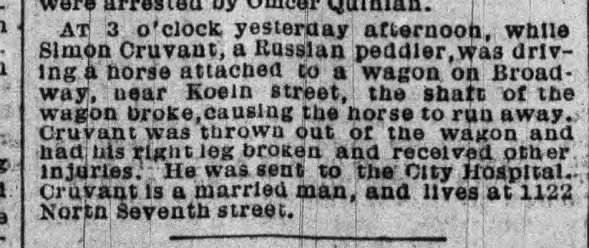I conduct a lot of genealogy research from the comfort of my home computer. One of the key resources I use is my St. Louis County Public Library Card. (Other library systems, as well as some genealogy societies, provide similar resources for their users.)
Here's a sampling of databases I can search/browse from the comfort of my home, for free (complete list) I have indicated the subscription price I'd have to pay without the library card
Databases I could subscribe to as an individual
- NewspaperArchive.com ($75/6 mos)
- AccessibleArchives: ($90/year)
- African American Newspapers 19th century
- A Newspaper Perspective
- Newspapers.com ($45/6 mos)
- I am assuming that the ProQuest library edition is similar to the Newspapers.com Basic subscription
- Fold3 ($80/year)
- Fire Insurance Maps Online
- HeritageQuest Online
- Newsbank: St. Louis Post Dispatch (1981-Current)
- Newsbank: Access World News (1978-current)
- Newsbank: America's Obituaries
- ProQuest: Historical New York Times (1851-2011)
- ProQuest: Historical St. Louis Post Dispatch (1874-1922)
- ProQuest Digital Microfilm - St. Louis Post Dispatch 1989-Present
- Gale Group: Nineteenth Century US Newspapers
- EBSCOhost: Academic Search Elite (1985-current)
- EBSCOhost: AAS Historical Periodicals Collection (1684-1912)
- HistoryGeo (searchable database of 12.3 million names connected to land ownership maps covering the 29 public land states and Texas)
- Ancestry Library Edition ($99/6 mos)
- American Ancestors ($95/year)
- FindMyPast ($129/year)
- Archion (baptisms, confirmations, marriages and burials for Protestant churches in Germany. 16th-19th century) $200/year (at current Euro to $ rates)
I know I am lucky to live in St. Louis, as not every library has equivalent resources. However, if you don't check, you won't know what your library has to offer.

